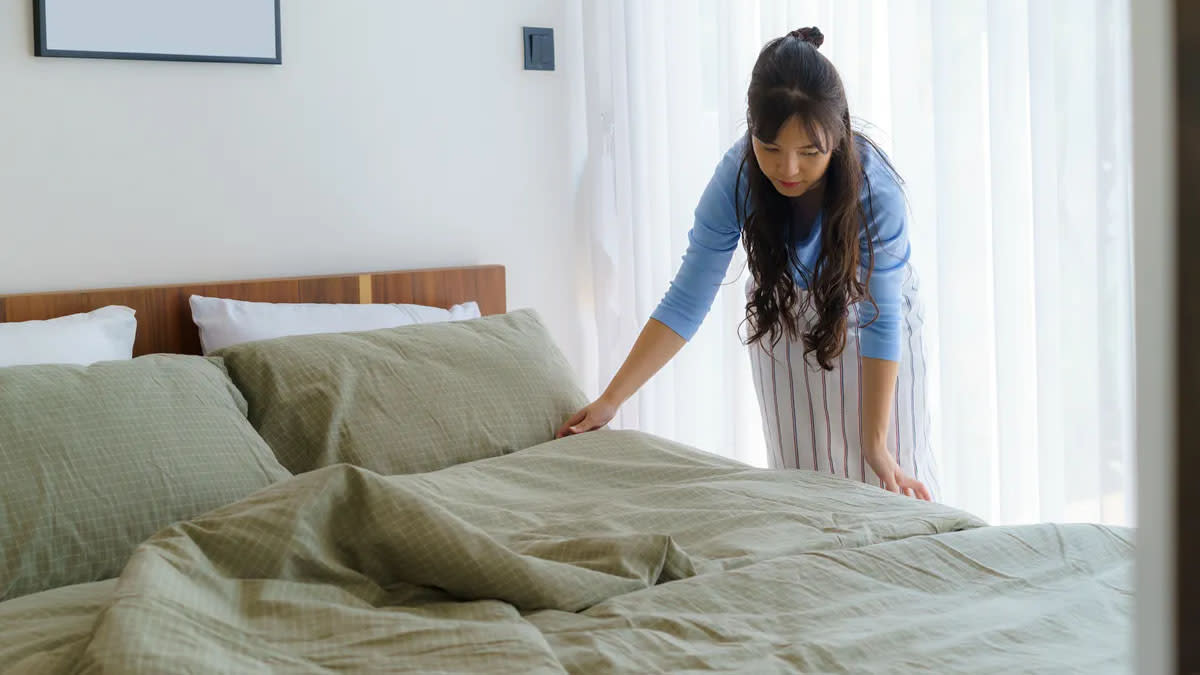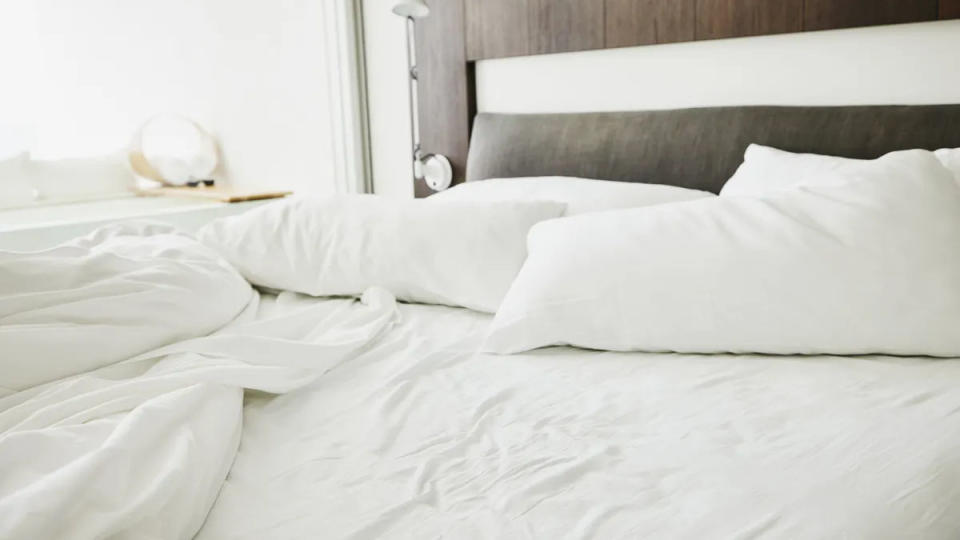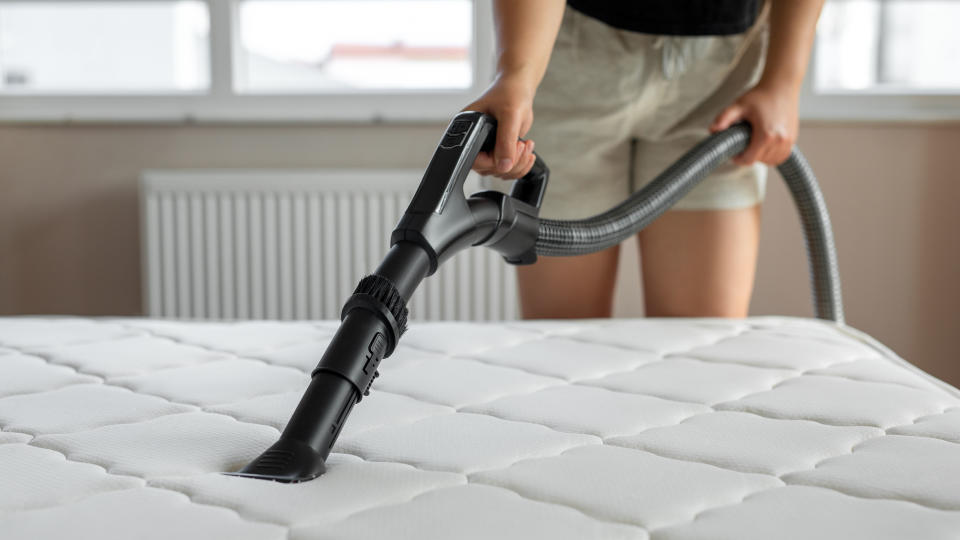The unhygienic reason why you shouldn’t make your bed in the morning

Making your bed in the morning is a message that has been drilled into us from a young age, but studies show that making our beds first thing in the morning could be turning our beds into a bacterial breeding ground. Dust mites and bacteria thrive in dark, warm and humid environments, and even the best mattresses with the latest in hypoallergenic technologies aren’t immune to their spread.
WHAT ARE DUST MITES?
Dust mites are microscopic pests that dwell in approximately four out of five American homes. They thrive in dark, humid environments and can cause allergies and aggravate respiratory issues.
Making your bed as soon as you wake up locks in moisture that we lose while we sleep, which creates the perfect setting for dust mites to repopulate. Dust mites are microscopic pests that feed on our dead, shed skin (yuck), and can even cause asthma and other allergies.
Here, we’ll explore in finer detail why making your bed in the morning is actually unhygienic, how to tell if you’re battling a dust mite allergy, plus outline some healthier habits to keep your bed fresh and dust-mite free. Let’s get started.
Why you shouldn't make your bed in the morning
It might be touted as one of the best ways to kick-start a productive day, but making your bed soon after waking is one of the most unhygienic habits you can fall into. This is because during an average eight hour period of sleep, our bodies lose between 0.5 and one litre of water through our pores.
That moisture seeps into our pyjamas, bed sheets and, without a mattress protector, our mattresses. In addition to moisture, we also shed dead skin, upon which dust mites — which are microscopic pests that dwell in soft furnishings — feed on.

Making our bed in the morning traps the moisture we lose while asleep under our covers, along with dust mites and other bacteria that may have been lurking on our skin. This dark, warm, humid environment we have now created is perfect for dust mites, which are now free to feed and breed.
How to tell if there are dust mites in your bed
Dust mites are microscopic pests that feed on our dead, shed skin and tend to linger close to where we rest, such as our soft furnishings, bed sheets and mattress. You can’t see dust mites, but there are signs of their presence.
Swollen nasal cavities, which can lead to snoring, sneezing and coughing, are strong indicators that there are dust mites present in your bed, and that you are allergic to them. Or rather, you are allergic to the proteins found in their faeces, urine and decaying bodies. According to the American Lung Association, the presence of dust mites can worsen existing respiratory issues, such as asthma. Symptoms of dust mites dwelling in your bed include:
Nasal congestion
Snoring
Coughing
Sneezing
Itchy eyes and nose
How to make your bed more hygeinic
Don't make your bed
This doesn’t mean you need to leave your sheets in a tangled, crumpled mess. Instead, neatly fold your duvet down at the bottom of the bed. Ventilating your bed this way creates an inhospitable environment for dust mites.
Wash your sheets regularly
Paying close attention to any product care labels, strip your bed and wash your sheets in a warm, soapy wash every week. Not only will this help keep dust mites at bay, any bacteria lurking in your sheets will also be killed.
Vacuum your mattress

Vacuuming your mattress every time you strip it is a healthy habit to fall into, especially if you have pets and they are prone to hopping up onto your bed. Ensure you reach deep into any seams or folds to keep dust mite populations down and eradicating their faeces. For an even deeper clean, steaming your mattress allowing it to air dry will kill dust mites on the spot.
Invest in a mattress protector
A hypoallergenic mattress protector will help keep your mattress fresh and clean, and keep moisture locked out. Either invest in a machine washable mattress protector, or an encased one — a washable mattress protector is easy to keep clean, but a fully zippered mattress protector makes your mattress impenetrable to dust mites, bed bugs and other pests. Check out our guide to the best mattress protectors for more of a steer.
Lower the temperature
Dust mites like warmth and humidity, so pulling the duvet back and opening a window helps disperse the moisture from our sheets and properly ventilate the area. Better still, any direct sunlight from the window will help kill dust mites.

